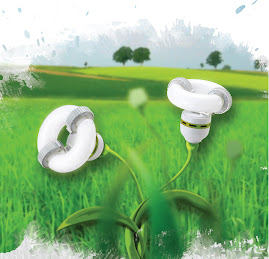Long Qi, Chen Yuming and Chen Dahua
Institute for Electric Light Sources, Fudan University, Shanghai 200433, China
E-mail: Longqi@fudan.edu.cn
Abstract. Hysteresis and mode transitions in inductively coupled Ar–Hg plasma in the electrodeless induction lamp are studied at different discharge frequencies and under different matching conditions. It is observed that transition currents change at different frequencies and hysteresis exists not only between the starting and minimum maintaining currents of the electromagnetic mode (H mode) discharge but also between the starting and minimum maintaining currents of the electrostatic mode (E mode) discharge. The illuminance and global electrical parameters in the mode transitions are recorded. It is shown that the E to H mode transition is accompanied by increased plasma resistance and decreased plasma reactance, which results in a higher efficiency in the H mode. Under the same output voltage of the radio frequency source, mode transition can also be triggered by changing the matching condition. The emission spectra recorded before and after the E to H mode transition provide experimental evidence for the theory that the change of the electron energy distribution function plays an important role in the hysteresis effect.
Print publication: Issue 15 (7 August 2006)
Received 10 May 2006, in final form 9 June 2006
Published 21 July 2006
Many of you have asked for more information on dimmable induction lighting systems. Here's a document detailing the technicals. The Chinese are really heading the efforts here because nationwide they are energy hungry and the authorities know they cannot build enough coal burning power plants in time. A similar situation is occuring in developing countries and cities like Dubai and Mexico. Though energy is cheap, there simply isn't enough to catch up with the explosive economic growth.
You can find the original document here. (Note: subscription may be required if you are not a member of IOP)
Thursday, May 10, 2007
Tuesday, May 08, 2007
The Science behind Miser Lighting
By: L. Michael Roberts, 2007 Fibro Light Technology Inc. - All Rights Reserved
In 2006, Miser lighting introduced new, energy efficient high-bay lighting fixtures based on research from Fibro Light Technology. These long lasting, energy efficient lights have the potential to save clients about 50% in energy and maintenance costs over their lifetime compared to typical Metal halide, Mercury vapour and Sodium lamps usually used in industrial lighting applications.
Many people who see the new lighting fixtures remark at how bright they appear and the high quality of light emitted from the fixtures. However, when people have compared light meter readings of the new lights with conventional lighting, the new lights are measured as producing less output on the meter than conventional lights. This has led to people questioning the installation of these lights - even though they use far less energy - as they expect that areas lit by them will not be bright enough compared to conventional lighting even though their eyes are telling them they are the same or brighter.
Their FAQ can be found here .
A comparison of a tunnel lighting project can be found here .
Their brochure and a simple cost savings estimate can be found here .
In 2006, Miser lighting introduced new, energy efficient high-bay lighting fixtures based on research from Fibro Light Technology. These long lasting, energy efficient lights have the potential to save clients about 50% in energy and maintenance costs over their lifetime compared to typical Metal halide, Mercury vapour and Sodium lamps usually used in industrial lighting applications.
Many people who see the new lighting fixtures remark at how bright they appear and the high quality of light emitted from the fixtures. However, when people have compared light meter readings of the new lights with conventional lighting, the new lights are measured as producing less output on the meter than conventional lights. This has led to people questioning the installation of these lights - even though they use far less energy - as they expect that areas lit by them will not be bright enough compared to conventional lighting even though their eyes are telling them they are the same or brighter.
Their FAQ can be found here .
A comparison of a tunnel lighting project can be found here .
Their brochure and a simple cost savings estimate can be found here .
Subscribe to:
Posts (Atom)
